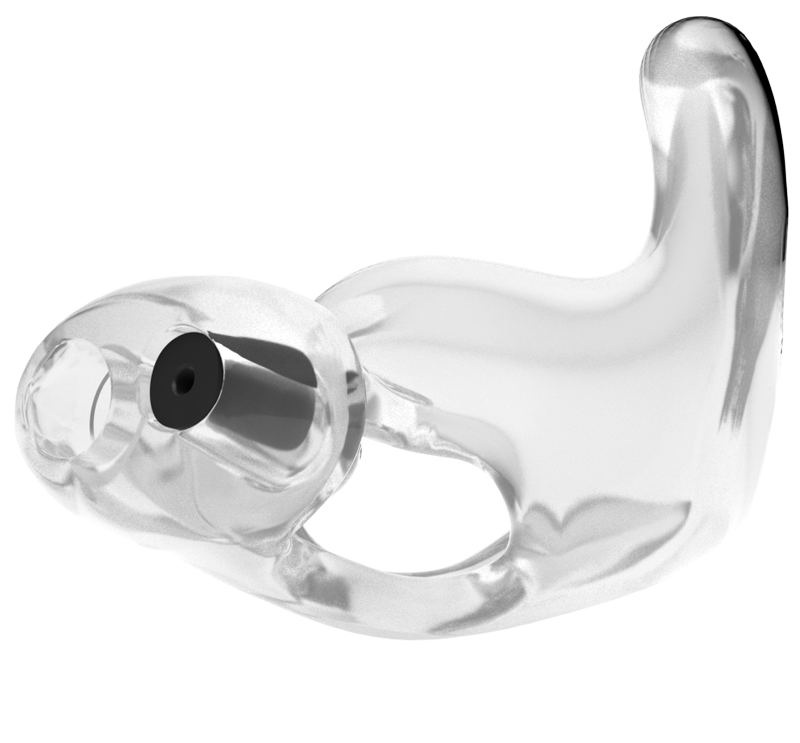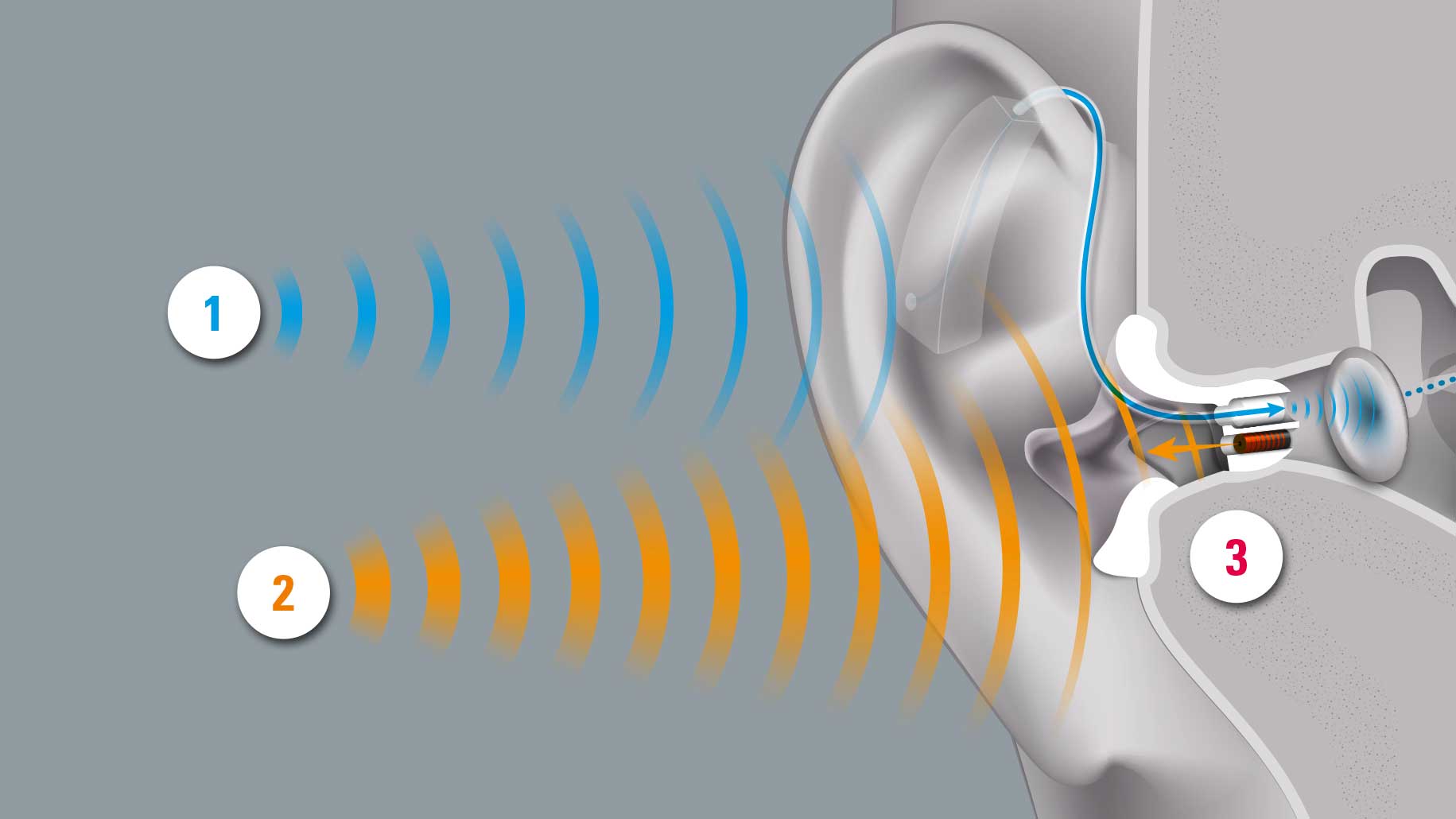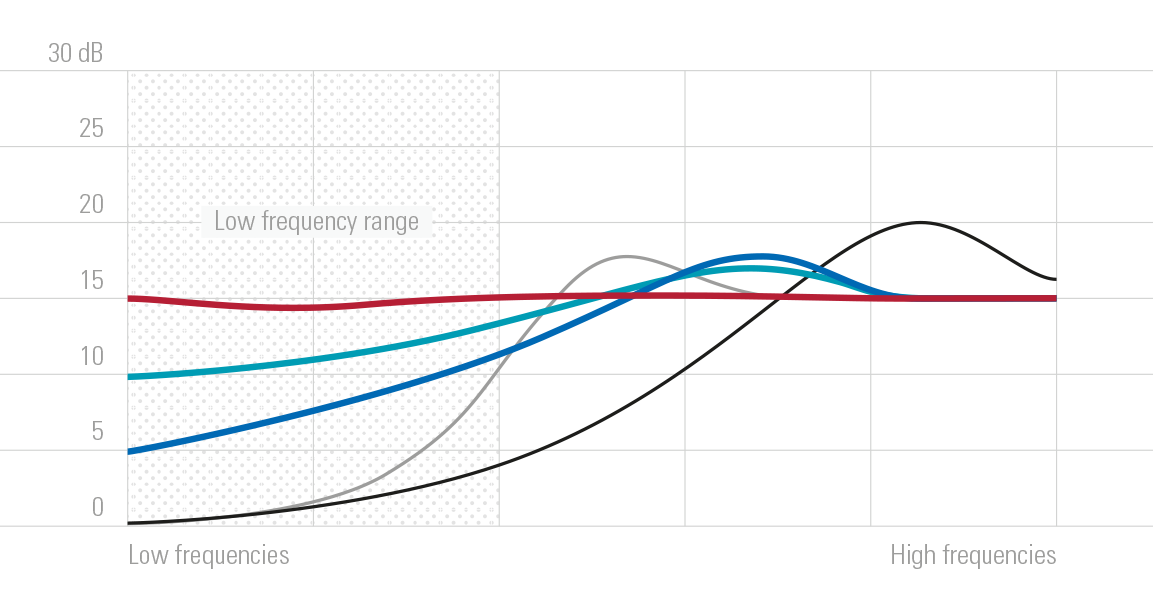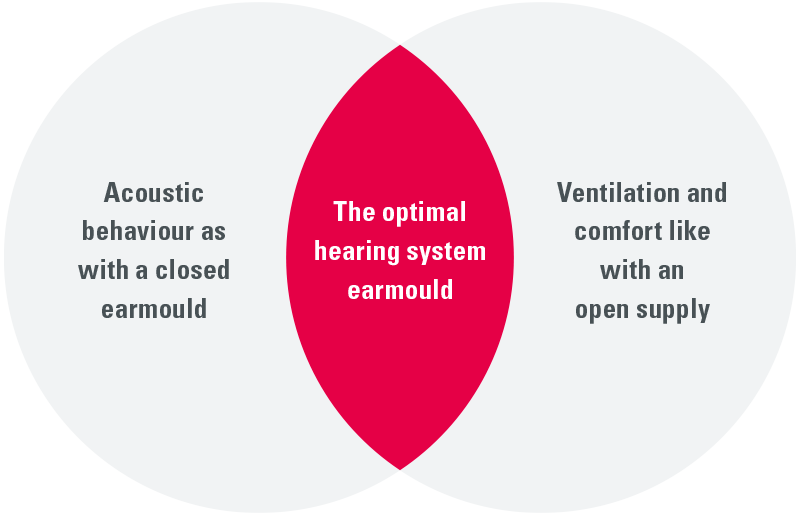Earmoulds with insulation filter
HCP – Hörluchs Communication Plastic
The challenge
Voice intelligibility even in noisy environments
Noise has many faces: clattering dishes instead of conversation, incomprehensible noise in groups – situations in which it is difficult for hearing aid users to understand speech. Why? Because ambient noise reaches the eardrum when the hearing system is worn open with a small dome or an earmould with a ventilation hole. Noise is overlapping the spoken words.
The solution
HCP – The earmould with acoustic insulation filter
The solution weighs around 1 gram, sits in the ear, filters out noise and provides 20 percent more speech understanding in noisy environments: the HCP earmould. The highlight: HCP works for over 70 percent of all hearing aid users and can be connected to any BTE hearing system. Inside the earmould is an acoustic filter made of carbon fibre. This prevents disturbing ambient noise from entering and provides the necessary ventilation of the ear tissue.

Available in 3D TITAN, 3D TEC and 3D THERMOtec®

1 Speech signals
Picked up by the hearing system, amplified, and guided to the eardrum thanks to the sound guide.
2 Noise
Absorbed by the acoustic filter before it can reach the eardrum. The material properties of the carbon fiber filter provide the necessary ventilation and moisture exchange.
3 HCP earmould with carbon filter
Blocks disruptive noise. Speech signals pass through to the eardrum in a defined manner. The hearing aid can reach its full potential.
The result
Speech is reliably understood even in noisy environments.
The effect
How HCP works
The best acoustical earmould essentially determines the acoustic effect that reaches the hearing aid user. The HCP from Hörluchs® is more than a conventional earmould. It combines the design of a skeletonised half foil with an acoustic damping filter made of carbon fibre, the Hörluchs® carbon filter. This combination is the key to the unique mode of action: 15 decibels of attenuation in the low frequency range prevent upward masking in the main speech range.
This means that ambient noise is absorbed and speech comprehension in noisy environments is significantly improved. The technical features in the hearing system that are important for speech recognition (directional microphones, noise suppression and speech recognition) can take full effect. At the same time, the ear tissue remains well ventilated so that no undesired occlusion effect occurs and inflammation is prevented.
The comfort
Skeletonised half foil
For unique wearing comfort, each HCP is made in skeletonised half-foil. As a result, it sits comfortably and lightly in the ear at only about one gram. The positive effect for the ear tissue is obvious: in addition to the Hörluchs® carbon filter, the design also ensures ventilation and the necessary supply of oxygen. This prevents inflammatory processes and condensation in the acoustic system as well as the undesirable occlusion effect. 100 percent effect of the technical features in the hearing aid and 100 percent wearing comfort - that is HCP.
The insulation filter
Breathable carbon filter
The Hörluchs® carbon filter in the vent of the HCP significantly reduces the masking of the disturbing low-frequency component: even a one decibel improvement in SNR (signal-to-noise ratio) means 20 percent more speech understanding in noisy environments while wearing a hearing aid. By choosing from three optional filters, the HCP earmould is adapted to the requirements of every hearing aid user. The filter also counteracts the undesirable occlusion effect because the carbon fibre used is breathable.

Acoustic behaviour
• HCP HLFs 15 L
• HCP HLFs 13 L
• HCP HLFs 10
For comparison, the acoustic behaviour with the earmould
• Type COMFORT with 1 mm additional drilling (venting)
• Type FOIL with 1 mm additional drilling (venting)
The advantages
The ratio of speech to noise is characterised by the SNR value, where SNR stands for "Signal To Noise Ratio". Improving the SNR value with the appropriate filters has the following advantages:
- The improvement of the SNR in the Oldenburg sentence test by 1 dB has the effect of a 15 to 20 percent improvement in speech understanding (OLSA 2011).
- The linear attenuation of 10 to 15 dB in the low frequency range also improves the SNR value.
- Masking effects in the low-frequency range are significantly reduced by the HCP earmould, which enables considerably better speech understanding through the hearing system.
- The HCP earmould supports almost all hearing system features through its acoustic mode of action.
